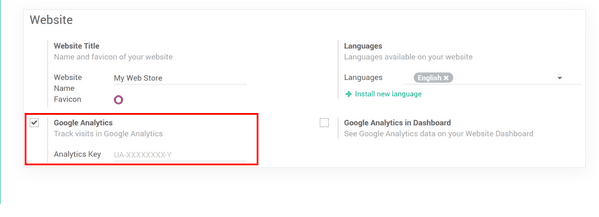Ecommerce dashboard
The ecommerce dashboard for the company can be viewed in the website module of the
platform. If not visible the user can install the e commerce application available
in the application window under the website categories. The home dashboard is the
reporting aspect of the ecommerce website. The reporting aspect can be viewed in
both graphical and pivot view. In the graphical view the user is demonstrated with
illustrative charts on sales operations which can be in the form of line graph,
bar chart or pie chart.
The various grouping by and measures functionality available by default and as well
as customizable will allow the user to generate custom made resorts of the ecommerce
operations. In addition, the sorting function in the filtering menu will allow the
user to do the same on the data available. The pivot view of the ecommerce dashboard
can be viewed by scrolling down the menu and the user will be depicted with the
quantitative pivot view reports where the measures can be allocated based on the
users as per their needs.
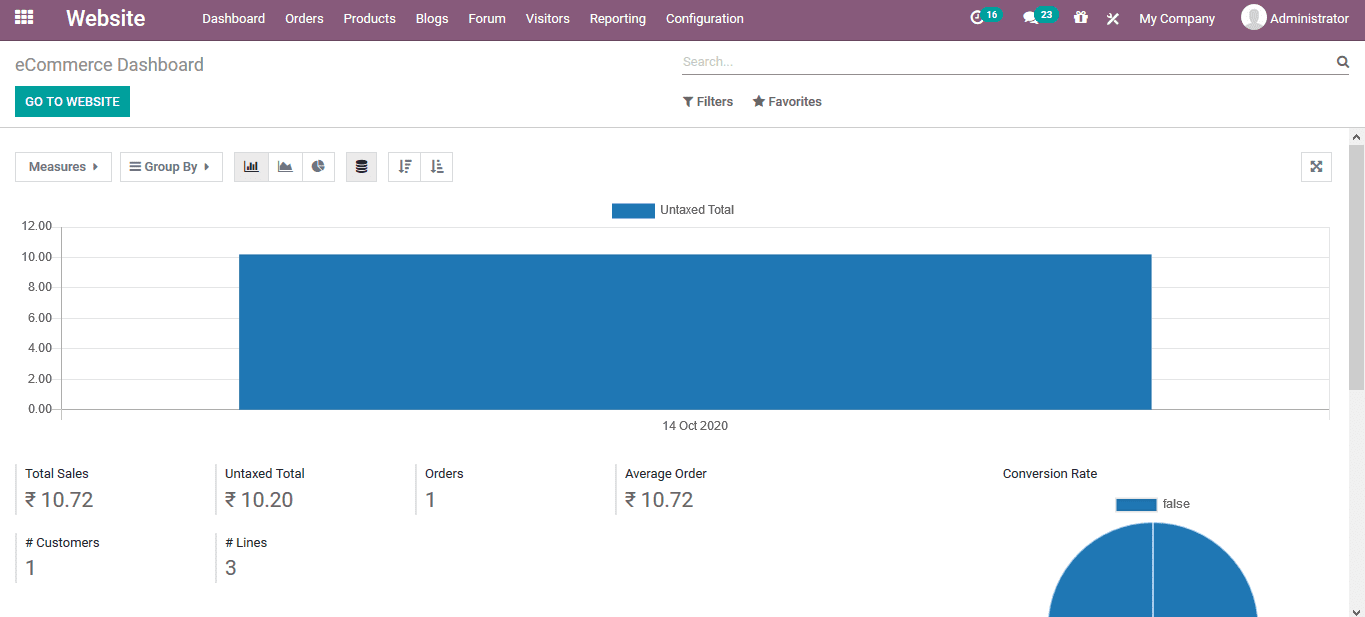
Analytics
The analytics reporting menu can be accessed from the dashboard tab available in
the module and the user will be depicted with the data obtained on linking with
the Google analytics operations of the company. The Google analytics data can be
classified based on the website operation, weekly, monthly and yearly reports which
allow the user to obtain periodical aspects of the company operation.
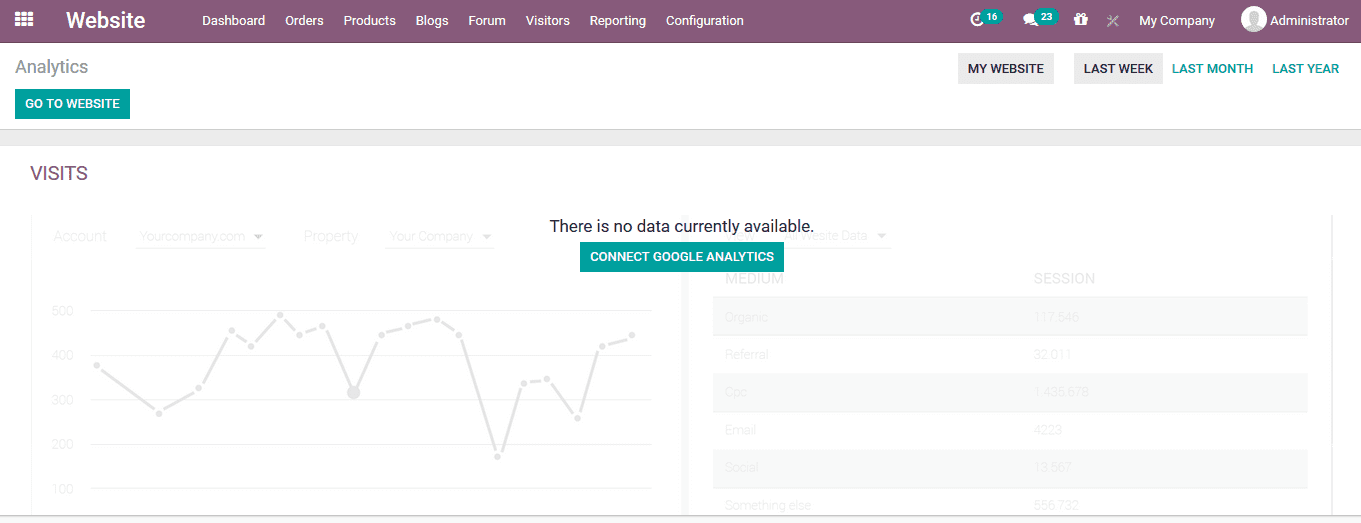
On selecting the option available to connect Google analytics to the platform the
user will be depicted with the following menu. The user can assign the tracking
ID of the user and the client ID.
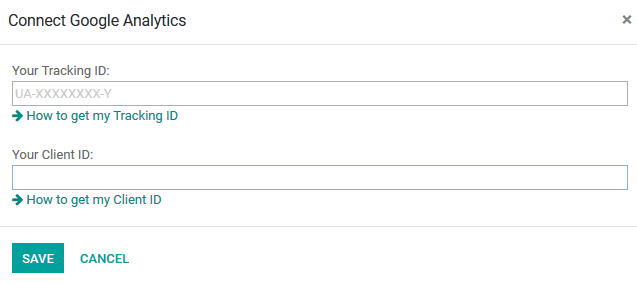
If the user is in need of any clarification on how to generate the tracking ID or
obtain the client ID he/she can always choose the external link option available.
On selecting the eternal link options, the user will be directed to the documentation
page of the Odoo and the user can obtain information on how to connect Google analytics.
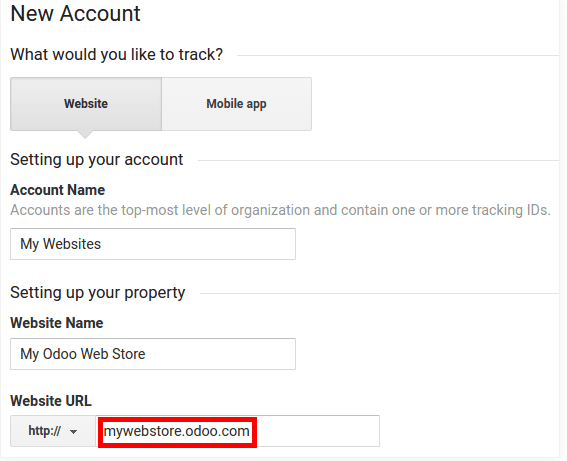
The documentation page will also describe how to copy the tracking Id to be attached
to the platform.

Under the Google analytics option being enabled the user can provide a tracking
ID as the analytics key to start the operation to be embedded in the platform.
